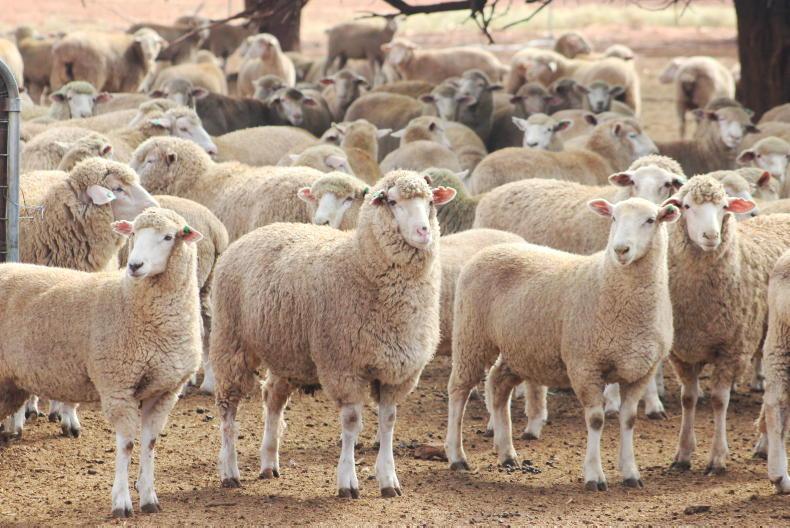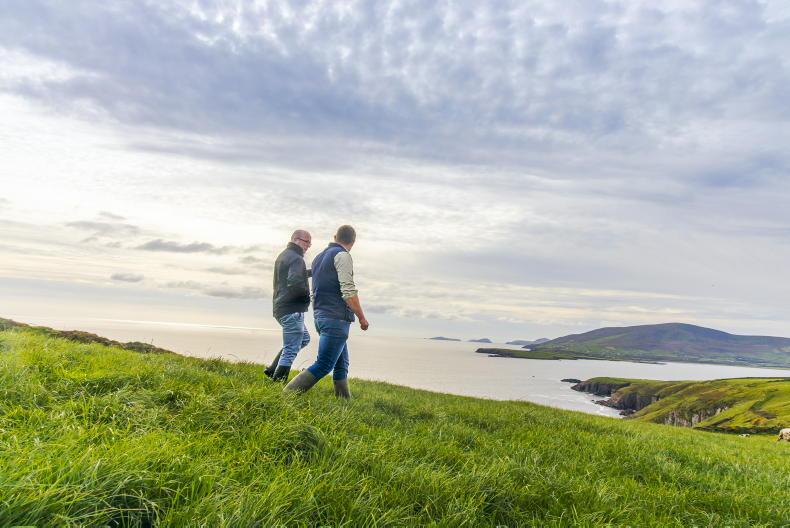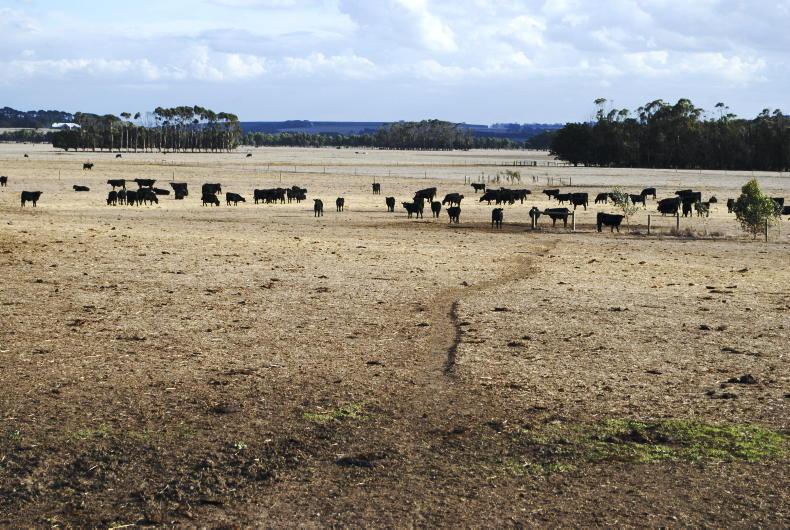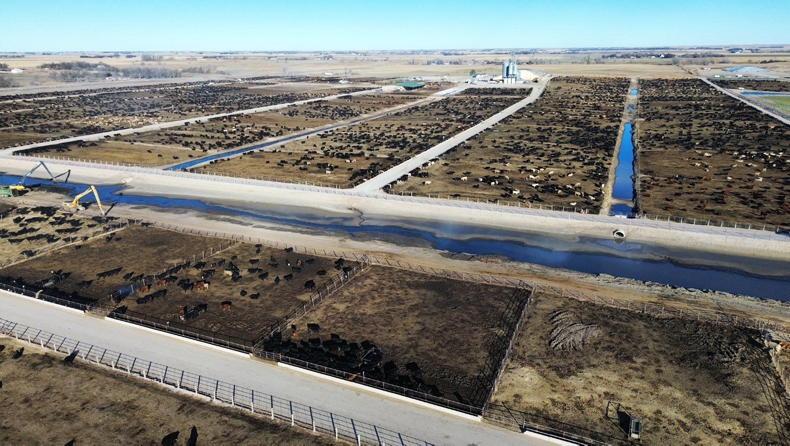It’s now over a year since COVID-19 first entered our daily lives. While many businesses have adapted to the “new normal” of living with the virus in order to continue operations in some capacity, many small, family-run businesses in the food service industry have had their doors closed for the majority of the past 12 months.
Decisive blow
No other sector of the economy has been dealt such a swift and decisive blow as the food service sector, as Government health restrictions meant the mass shutdown of pubs, restaurants, cafés and hotels all over Europe.
In total, Europe’s food service market is valued at an enormous €600bn and has been growing rapidly over the past decade as consumers continue to eat more and more food out of home.
On the island of Ireland (Republic of Ireland and NI), the total food service market was valued at €8.5bn before COVID-19 hit, while the UK food service sector had grown to become a €100bn market.
Up to last year, Ireland’s food service market had recorded eight consecutive years of topline growth and had become a crucial route to market for many food businesses.
The sudden collapse in demand from the food service market last year reverberated right down through the food supply chain
The sector was particularly important for Irish beef exports into the UK and accounted for a significant volume of Irish cheese too.
As such, the sudden collapse in demand from the food service market last year reverberated right down through the food supply chain and caused a short-term drop in Irish meat and dairy prices at the farm gate.
Demand shock
After the initial demand shock last March and April, the market settled down as the industry began to adapt to the public health restrictions as best as they could.
Some food service operators have tried to keep open by offering takeaway, delivery, or click-and-collect options for consumers. Even still, turnover for these businesses is way down on normal levels and most have been forced to cut staff numbers.
In November last year, Bord Bia published a detailed new insights report on the state of the Irish food service sector after a devastating year for all operators.
Sales
The report showed that food service sales in Ireland had collapsed by 48% in 2020 to just over €3.3bn, while in Northern Ireland the food service sector had shrunk by 46% to just under €1.2bn.
The numbers were stark but not unexpected given the extent of the lockdown restrictions in March, April and May last year and again in October and November.
Also included in the report from Bord Bia was a forecast for the sector’s recovery post COVID-19, which spelled out a number of best- and worst-case scenarios for food service operators.
Recovery
In a best-case scenario, Bord Bia forecasts that food service sales would recover 41% in 2021, which would mean a €1.9bn jump in sales on 2020 levels.
In this scenario, however, the food service market would still be down 14%, or almost €2.2bn, on where it was pre-COVID in 2019.
However, this best-case scenario was based on the assumption that public health restrictions would be eased in early 2021 as Government vaccines programmes ramped up.
As we now know, the rollout of vaccines in Europe has been dogged by supply issues and severe public health restrictions have been in place in most European countries since the beginning of 2021.
Worst-case scenario
In its forecast for a worst-case scenario for the food service sector, Bord Bia estimated that sales would recover by just 16% in 2021, which would mean almost €720m in extra sales.
However, this would leave the overall food service market in Ireland down 22%, or €3.3bn in sales, on where it was pre-COVID-19.
These worst-case projections for the food service industry were based upon a slow rollout of the COVID-19 vaccine, continued public health restrictions for most of the year and the continued absence of international tourism in Ireland.

Maureen Gahan, food service specialist, Bord Bia.
According to Maureen Gahan, Bord Bia’s food service specialist, the outlook for the food service industry in Ireland has actually regressed to a worse state than the worst-case scenario forecast by Bord Bia’s in November.
“I would say the outlook for food service in Ireland in 2021 is now actually worse than the worst-case scenario we outlined last year. We did not envisage this level of public health restrictions in 2021 when we were doing the analysis,” says Gahan.
“When the Government does start to pull back restrictions later this year, how many hotels and food service operators will actually reopen? Some operators have already said they are going to hold off until 2022 to fully reopen because there will be no proper tourist season again this year,” she says.
“Even if the vaccine rollout is completed and the economy reopens in the second half of the year, food service operators are still going to be living within public health guidelines for a long time to come.
“So the food service sector could see a burst of consumer spending in quarter four this year but they will still be at reduced capacity because business will still have to limit numbers and have sanitising protocols in place,” says Gahan.
“We will be going back out to the industry for a series of research interviews this month and publishing a mid-year White Paper in June. This will allow us to review our initial predictions for the food service sector and confirm updated forecast growth figures for the market in 2021,” she added.
The food service industry is extremely resilient. It came through a very difficult period after the financial crash in 2011
While the vaccine rollout should help the food service industry reopen on a more permanent basis later this year, Gahan thinks it could be 2025 and beyond before we see a full recovery in the food service industry to pre-COVID-19 levels of business.
“The food service industry is extremely resilient. It came through a very difficult period after the financial crash in 2011. However, I don’t think we’re going to see a full recovery in the sector for three to five years,” she says.
Catering
While restaurants and cafés are the most visible operators, there are many other areas of the food service industry where business owners are facing a very uncertain future, including contract catering and hotels.
Tourist numbers into Ireland over the last decade have swelled to more than 11m people every year, who spend an estimated €5.8bn on food, drink and accommodation.
However, the short-term future of tourism is quite challenged.
Even with a successful global vaccine programme, it will be many years before tourism numbers fully recover.
This leaves many hoteliers and food service operators in regions of Ireland that are tourist-dependent with an uncertain outlook for the years ahead.
An even bigger question mark is now hanging over the future viability of many contract catering businesses in this country.
The COVID-19 pandemic has accelerated a shift to home-working, meaning many companies will be weighing up the benefits of large offices and canteens for staff over the coming years.
At the same time, it’s difficult to see the number of conferences and public meetings returning to pre-COVID-19 levels again, which would also be a major blow to the catering industry.
So while the vaccine rollout may mean an end to the stop-start restrictions that really hurt the food service industry last year, the longer-term impact of COVID-19 could mean much more fundamental changes to the market.
No other sector of the economy has taken as big a hit from the pandemic as food service.Very important sector for Irish food and drink exports.Public health guidelines will affect the sector for a prolonged period after reopening.The longer-term impact on Irish hospitality and recovery in conference business will be slow.
It’s now over a year since COVID-19 first entered our daily lives. While many businesses have adapted to the “new normal” of living with the virus in order to continue operations in some capacity, many small, family-run businesses in the food service industry have had their doors closed for the majority of the past 12 months.
Decisive blow
No other sector of the economy has been dealt such a swift and decisive blow as the food service sector, as Government health restrictions meant the mass shutdown of pubs, restaurants, cafés and hotels all over Europe.
In total, Europe’s food service market is valued at an enormous €600bn and has been growing rapidly over the past decade as consumers continue to eat more and more food out of home.
On the island of Ireland (Republic of Ireland and NI), the total food service market was valued at €8.5bn before COVID-19 hit, while the UK food service sector had grown to become a €100bn market.
Up to last year, Ireland’s food service market had recorded eight consecutive years of topline growth and had become a crucial route to market for many food businesses.
The sudden collapse in demand from the food service market last year reverberated right down through the food supply chain
The sector was particularly important for Irish beef exports into the UK and accounted for a significant volume of Irish cheese too.
As such, the sudden collapse in demand from the food service market last year reverberated right down through the food supply chain and caused a short-term drop in Irish meat and dairy prices at the farm gate.
Demand shock
After the initial demand shock last March and April, the market settled down as the industry began to adapt to the public health restrictions as best as they could.
Some food service operators have tried to keep open by offering takeaway, delivery, or click-and-collect options for consumers. Even still, turnover for these businesses is way down on normal levels and most have been forced to cut staff numbers.
In November last year, Bord Bia published a detailed new insights report on the state of the Irish food service sector after a devastating year for all operators.
Sales
The report showed that food service sales in Ireland had collapsed by 48% in 2020 to just over €3.3bn, while in Northern Ireland the food service sector had shrunk by 46% to just under €1.2bn.
The numbers were stark but not unexpected given the extent of the lockdown restrictions in March, April and May last year and again in October and November.
Also included in the report from Bord Bia was a forecast for the sector’s recovery post COVID-19, which spelled out a number of best- and worst-case scenarios for food service operators.
Recovery
In a best-case scenario, Bord Bia forecasts that food service sales would recover 41% in 2021, which would mean a €1.9bn jump in sales on 2020 levels.
In this scenario, however, the food service market would still be down 14%, or almost €2.2bn, on where it was pre-COVID in 2019.
However, this best-case scenario was based on the assumption that public health restrictions would be eased in early 2021 as Government vaccines programmes ramped up.
As we now know, the rollout of vaccines in Europe has been dogged by supply issues and severe public health restrictions have been in place in most European countries since the beginning of 2021.
Worst-case scenario
In its forecast for a worst-case scenario for the food service sector, Bord Bia estimated that sales would recover by just 16% in 2021, which would mean almost €720m in extra sales.
However, this would leave the overall food service market in Ireland down 22%, or €3.3bn in sales, on where it was pre-COVID-19.
These worst-case projections for the food service industry were based upon a slow rollout of the COVID-19 vaccine, continued public health restrictions for most of the year and the continued absence of international tourism in Ireland.

Maureen Gahan, food service specialist, Bord Bia.
According to Maureen Gahan, Bord Bia’s food service specialist, the outlook for the food service industry in Ireland has actually regressed to a worse state than the worst-case scenario forecast by Bord Bia’s in November.
“I would say the outlook for food service in Ireland in 2021 is now actually worse than the worst-case scenario we outlined last year. We did not envisage this level of public health restrictions in 2021 when we were doing the analysis,” says Gahan.
“When the Government does start to pull back restrictions later this year, how many hotels and food service operators will actually reopen? Some operators have already said they are going to hold off until 2022 to fully reopen because there will be no proper tourist season again this year,” she says.
“Even if the vaccine rollout is completed and the economy reopens in the second half of the year, food service operators are still going to be living within public health guidelines for a long time to come.
“So the food service sector could see a burst of consumer spending in quarter four this year but they will still be at reduced capacity because business will still have to limit numbers and have sanitising protocols in place,” says Gahan.
“We will be going back out to the industry for a series of research interviews this month and publishing a mid-year White Paper in June. This will allow us to review our initial predictions for the food service sector and confirm updated forecast growth figures for the market in 2021,” she added.
The food service industry is extremely resilient. It came through a very difficult period after the financial crash in 2011
While the vaccine rollout should help the food service industry reopen on a more permanent basis later this year, Gahan thinks it could be 2025 and beyond before we see a full recovery in the food service industry to pre-COVID-19 levels of business.
“The food service industry is extremely resilient. It came through a very difficult period after the financial crash in 2011. However, I don’t think we’re going to see a full recovery in the sector for three to five years,” she says.
Catering
While restaurants and cafés are the most visible operators, there are many other areas of the food service industry where business owners are facing a very uncertain future, including contract catering and hotels.
Tourist numbers into Ireland over the last decade have swelled to more than 11m people every year, who spend an estimated €5.8bn on food, drink and accommodation.
However, the short-term future of tourism is quite challenged.
Even with a successful global vaccine programme, it will be many years before tourism numbers fully recover.
This leaves many hoteliers and food service operators in regions of Ireland that are tourist-dependent with an uncertain outlook for the years ahead.
An even bigger question mark is now hanging over the future viability of many contract catering businesses in this country.
The COVID-19 pandemic has accelerated a shift to home-working, meaning many companies will be weighing up the benefits of large offices and canteens for staff over the coming years.
At the same time, it’s difficult to see the number of conferences and public meetings returning to pre-COVID-19 levels again, which would also be a major blow to the catering industry.
So while the vaccine rollout may mean an end to the stop-start restrictions that really hurt the food service industry last year, the longer-term impact of COVID-19 could mean much more fundamental changes to the market.
No other sector of the economy has taken as big a hit from the pandemic as food service.Very important sector for Irish food and drink exports.Public health guidelines will affect the sector for a prolonged period after reopening.The longer-term impact on Irish hospitality and recovery in conference business will be slow. 












SHARING OPTIONS